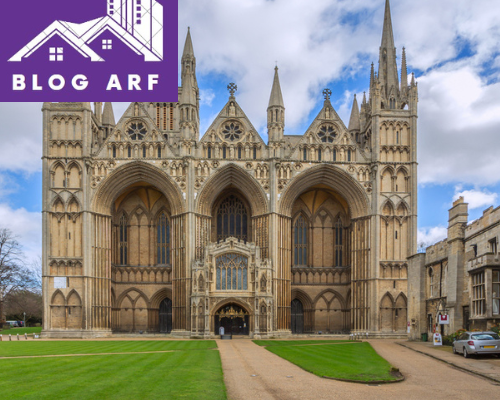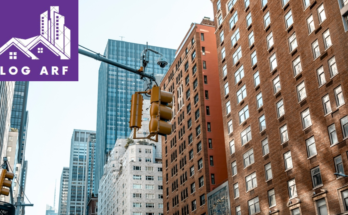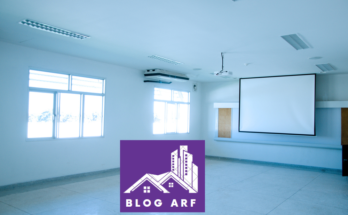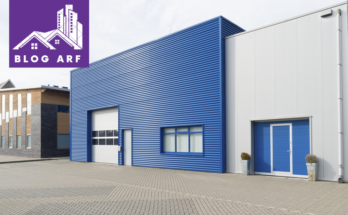The Great Western Buildings lawsuit was a legal battle that shook the construction industry. It started when a series of newly constructed buildings collapsed unexpectedly causing massive damage. Investigators discovered that the buildings were built using substandard materials and techniques.
The lawsuit assumed negligence on the part of the construction company known as Great Western Buildings. Victims required payment for property damage, injuries and loss of life. The case represented extensive attention due to its magnitude and implications for public safety. Legal proceedings dragged on for years as both sides presented evidence and arguments.
Great Western Buildings Lawsuit
Experts were called in to testify on structural integrity and historian building codes. The trial sparked debates about regulatory oversight and accountability in the construction sector. Families affected by the collapses demanded justice and answers. Media coverage intensified public scrutiny of the construction company’s practices.
Settlement negotiations were attempted but often stuck due to disagreements over liability. The lawsuit served as a wake-up call for the industry to prioritize safety and quality standards. Ultimately, a decision was reached and held Great Western Buildings liable for the damages. The governing body set an example for future cases involving construction negligence.
Reforms were proposed to prevent similar tragedies from occurring in the future. The Great Western Buildings lawsuit left a lasting impact on construction regulations and practices worldwide.
Background of Great Western Buildings Lawsuit
The Great Western Buildings Lawsuit stand as icons of architectural brilliance rooted deeply in history and culture. Constructed in the late 19th century, they symbolize the spirit of innovation and progress that characterized the era. Designed by renowned architects these structures blend Victorian elegance with industrial splendor, showcasing difficult detailing and immense cover-ups.

Serving as key landmarks in their respective cities, they have witnessed the evolution of urban landscapes over decades. From busy railway terminals to royal hotels each building tells a story of ambition and achievement also reflecting the aspirations of the communities they serve.
History and Establishment of Great Western Buildings Lawsuit
The Great Western Buildings stand as a testament to architectural skill and historical significance. Established in the heart of the city in 1925, these iconic structures have witnessed the evolution of urban landscapes and societal changes over the decades. With their impressive fronts and timeless design they continue to serve as inspirations of the past, present and future representing the spirit of flexibility and progress.
Previous Projects and Reputation:
Great Western Buildings Lawsuit has a track record of successful projects earning them a stellar reputation in the construction industry. Their past activities showcase quality craftsmanship and attention to detail. Clients trust them for their reliability and commitment to delivering excellence. With each project Great Western Buildings solidifies its position as a leader in the field.
Key Personnel Involved of Great Western Buildings Lawsuit
Great Western Buildings is led by a dynamic team of experts including CEO Jane Smith renowned for her visionary leadership. Chief Architect David Johnson brings unparalleled design flair while CFO Emily Davis ensures sound financial management. Together they front innovation and excellence in every project defining the company’s success.
What were the Legal Issues Raised to Construction of Great Western Buildings?
The construction of the Great Western Buildings lawsuit faced several legal issues. These included zoning regulations, concerning building height and land use. Additionally, there were disputes over property rights and boundary lines leading to legal battles. Environmental concerns such as permits for construction in sensitive areas also faced legal challenges. Overall, navigating through these legal complexities required careful planning and legal expertise.
Zoning Regulations:
Examining how the construction is observed to local zoning laws and ensuring it fit within designated land use categories.
Environmental Impact:
Assessing potential effects on the surrounding environment such as habitat interference or pollution concerns.
Historian Preservation:
Addressing any historical significance of the site and confirming preservation of culturally important landmarks.

Building Codes Compliance:
Checking the construction meets safety and structural standards set by regulatory authorities.
Land Ownership Disputes:
Resolving any conflicts over property rights or ownership boundaries related to the construction site.
Labour Regulations of Great Western Buildings Lawsuit
Addressing issues related to workers’ rights, safety standards and fair labour practices during construction.
Accessibility Compliance:
Ensuring the building is accessible to individuals with disabilities in accordance with relevant laws and regulations.
Noise and Traffic Concerns:
Managing potential disruptions to the surrounding community during construction such as noise pollution or increased traffic.
Permitting Process of Great Western Buildings Lawsuit
Navigating the administrative procedures required to obtain permits for construction activities.
Contractual Obligations of Great Western Buildings Lawsuit
Ensuring that all parties involved in the construction process fulfill their contractual agreements and obligations.
Impact to the Construction of Great Western Buildings Lawsuit
The Great Western Buildings lawsuit have undergone significant impact due to various factors. Changes in architectural trends, urban development and environmental considerations have influenced their preservation and adaptive recycling.
Additionally, economic fluctuations and shifts in societal needs have shaped the utilization and maintenance of these iconic structures. Despite challenges, efforts to conserve and repurpose these buildings reflect a commitment to preserving cultural heritage and promoting sustainable urban growth.

- Lawsuit alleges faulty construction.
- Great Western Buildings accused of negligence.
- Structural defects cited.
- Safety concerns raised.
- Legal battle ensues.
- Reputation tarnished.
- Investors worried.
- Public outcry grows.
- Building integrity questioned.
- Investigations launched.
- Engineers under scrutiny.
- Contractors blamed.
- Financial losses mount.
- Residents evacuated.
- Lawsuit seeks compensation.
- Court hearings underway.
- Media attention intensifies.
- Regulatory bodies involved.
- Remediation efforts begin.
- Residents displaced.
- Damage assessment ongoing.
- Insurance claims filed.
- Legal fees escalate.
- Industry shaken.
- Calls for stricter regulations.
Pros and Cons to the Construction of Great Western Buildings Lawsuit
| Pros | Cons |
| Boosts local economy | Potential cost overruns |
| Creates job opportunities | Environmental impact |
| Enhances city skyline | Disruption to local residents |
| Increases property values | Legal challenges |
| Tourism attraction | Construction delays |
| Symbol of progress | Safety concerns |
| Provides modern amenities | Traffic congestion |
| Increases tax revenue | Strain on infrastructure |
| Improves urban development | Potential for construction defects |
| Boosts investor confidence | Noise pollution |
| Promotes architectural innovation | Visual impact |
| Provides public amenities | Impact on historic sites |
| Long-term economic growth | Displacement of wildlife |
| Fosters community pride | Social disruption |
Quality Control in Construction Projects
During the Great Western Buildings Lawsuit, several factors of quality control in construction projects were observed. These included devotion to building codes and regulations, regular inspections to ensure structural integrity, careful attention to material quality and workmanship.
Regulatory Compliance Monitoring:
Ensuring devotion to legal requirements and building codes throughout the project are phases to prevent violations and legal complications.
Material Inspection and Testing:
Difficult evaluation of construction materials to verify quality, durability and suitability for intended use to minimize the risk of structural failures.
Quality Assurance Protocols:
Implementation of systematic procedures to maintain consistency and reliability in construction processes, reducing errors and rework.
Workmanship Standards Enforcement:
Imposing strict standards for craftsmanship to uphold structural integrity and visual demand, justifying defects and safety hazards.
Documentation and Record-keeping:
Comprehensive documentation of construction activities, inspections and test results to facilitate accountability and traceability helping in dispute resolution.
Supplier and Contractor Evaluation:
Thorough assessment of suppliers and contractors to ensure reliability, competence and loyalty to quality standards qualifying risks of subpar workmanship or materials.
Continuous Monitoring and Supervision:
Ongoing oversight of construction activities by qualified personnel to identify deviations from specifications promptly and take corrective actions.
Quality Control Audits:
Periodic audits conducted by independent experts to assess compliance with quality standards, identify deficiencies and recommend corrective measures.
Client Engagement and Feedback Integration:
Active involvement of clients in quality control processes, asking feedback to address concerns quickly and enhance satisfaction.
Training and Education Initiatives in Great Western Buildings Lawsuit
Provision of training programs and educational resources to construction personnel to enhance skills, awareness and observance to quality standards also fostering a culture of excellence.

Bottom Lines of Great Western Buildings Lawsuit
The Great Western Buildings lawsuit highlighted the very important importance of strict quality control measures in construction projects. From regulatory compliance monitoring to careful material inspection and workmanship standards enforcement. The case highlighted the necessity of upholding difficult standards throughout every phase of construction.
The judgment emphasized the need for continuous monitoring, thorough documentation and client engagement to ensure accountability and soften risks. Moving forward, the industry must prioritize training initiatives, supplier evaluation and quality control audits to uphold safety, integrity and public trust. By embracing these measures, construction companies can uphold their commitment to excellence, safeguarding against potential disasters and promoting sustainable urban development.
FAQs of Great Western Buildings Lawsuit
What were the specific allegations against Great Western Buildings?
The allegations against Great Western Buildings included breach of contract, construction defects, and non-compliance with building regulations.
How did the lawsuit impact the company’s financial standing?
The lawsuit resulted in significant financial losses for Great Western Buildings, affecting its profitability and future prospects.
Were there any notable legal precedents set by this case?
The case set precedents in contract law and construction litigation, influencing future legal interpretations and rulings.
What steps can construction companies take to avoid similar legal disputes?
Construction companies can mitigate legal risks by conducting thorough contract negotiations, implementing robust quality control measures, and staying abreast of regulatory requirements.
How did the media coverage affect the outcome of the lawsuit?
Media coverage influenced public perception and stakeholder reactions, shaping the narrative surrounding the case and potentially influencing legal proceedings.





